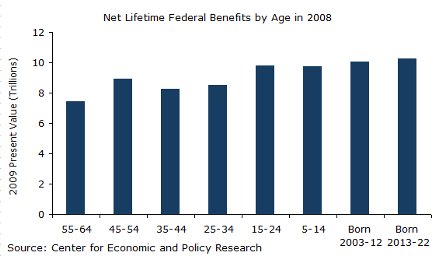December 10, 2009
December 10, 2009
For Immediate Release: December 10, 2009
Contact: Alan Barber, (202) 293-5380 x115
Washington, D.C.- While there is much talk of intergenerational debt among DC political insiders, few people have an understanding of the debt figures discussed in current policy debates. A new study from the Center for Economic and Policy Research shows that the $62 trillion figure most often discussed is actually due almost entirely to spiraling private-sector health care costs.
“It would be dishonest to portray projected debt levels as an issue of intergenerational equity,” said Dean Baker, an author of the report and Co-Director of CEPR. “The problem is a broken healthcare system.”
The report, “Taming the Deficit: Saving our Children from Themselves,” shows that the projected debt burden is not a matter of money transferred from younger generations to older generations. Rather, this figure is a measure of debt that is largely costs that young people are expected to run up. The authors of the study point out that projections of private-sector health care costs are likely to grow considerably larger in the near future. These costs will become unsustainable if they continue to rise at the rates we see under the current structure of existing programs.







